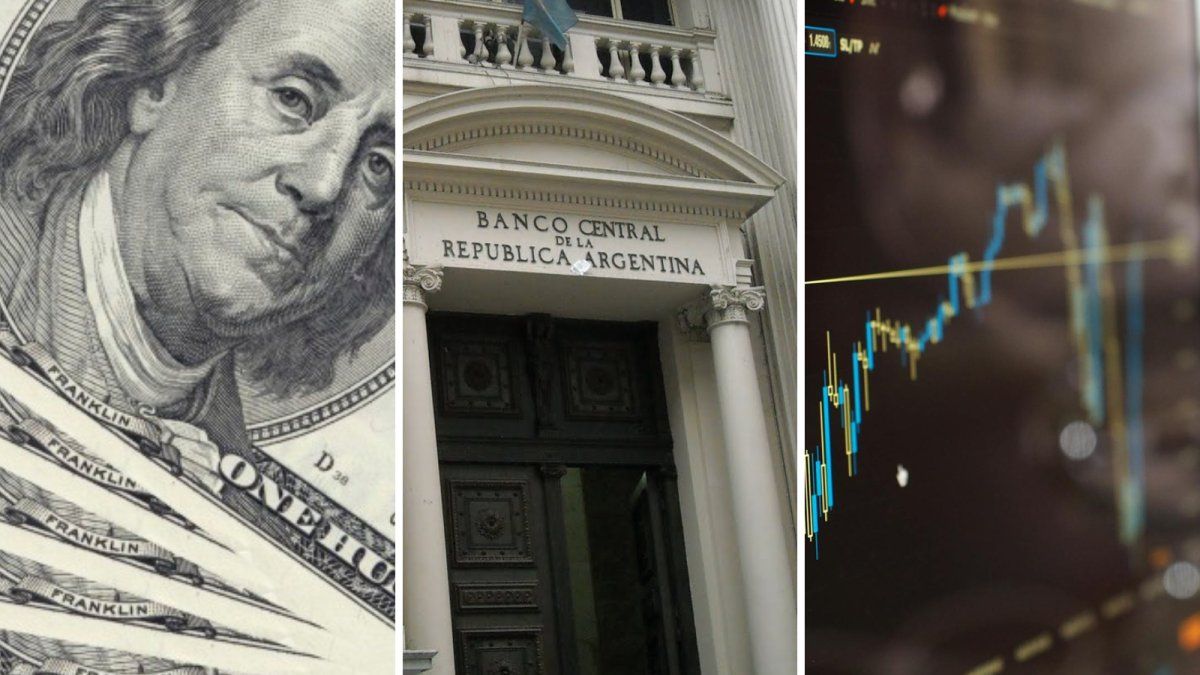A country risk that is falling, but not enough
Thus, the capital markets expert Marcelo Bastante points out that “The country risk has experienced a very significant reduction since the new government took officesince it was around 2,500 basis points and today it is close to 1,300″, but considers that, It is still a high number and the government’s expectation is that it will continue on a downward path.
The Government aims to eliminate the fiscal deficit and organize the macro to move forward in that direction, but It is difficult to lower it even though it says it is on the right track in the ordering of the economy and several voices in the market confirm this. Nor does the fact that Caputo has secured the dollars to pay his commitments have such a noticeable effect.
Likewise, the consultancy Delphos Investments mentions in a report this week that Argentine global bonds reached new highs during yesterday’s sessionbut the country risk It is well above the 1,150 points observed at the end of April this year and points out that “this apparent contradiction is actually explained due to the sharp drop in yields on US sovereign bonds.”
Country risk: the conditions needed to improve the index
And it is that The yield on the US 10-year note peaked just in April of this year.when it almost reached the 4.75% annual zone. “After these compressed more than 100 points, Argentine bonds will have to climb at least another 10% to bring the country risk indicator to a new recent low“, they point out.
They point out that “The fixed-income market continues to show an optimistic tone after President Milei presented a national Budget for 2025 “ambitious before Congress” and the yields in pesos continue to bet on a disinflationary trend, with the CER curve registering an average fall of 0.5% and the LECAP curve registering increases close to 0.3%. “At the same time, the sovereign curve in dollars rose an average of 1.7%, while the country risk reached its lowest level since the beginning of June, standing at 1,350 points,” reflects the Delphos report.
Article 1 of the budget reflects a firm commitment to fiscal balance and estimates, among other things, an annual inflation of 18% for 2025, projections well received by the market, especially for the sovereign curve in dollars, which seems somewhat behind compared to other financial assets. “Although these expectations should not be taken as a guaranteed reality, if the budget estimates are met, the big beneficiaries would be the sovereign curve in dollars and fixed-rate assets,” according to Delphos.
These elements suggest that it should go to a lower level. But the reasons for this resistance can also be explained in the local macro, according to city analysts. There are some “holes” in the government’s Excel spreadsheet that have not been closed.
The lack of dollars, one of the keys
One of those unknowns is the shortage of dollars“It is not going down because there are no reserves, the net reserves are negative, and the second half of the year is generally a period in which dollars do not usually enter. So, until we see where the dollars are going to come from in Argentina, it is difficult for it to go down,” he says. financial analyst Daniel Osinaga.
And he assures that it must be taken into account that the country is going to face a large debt maturity in January and this situation worries the market. Although The Government assures that the REPO has already been agreedthe analyst indicates that “the market does not believe a bit of this being the case and waiting to see to believe.”
In fact, with the country risk still high, the Minister of Economy, Luis Caputo, anticipated that the next reviews (the eighth and ninth) of the International Monetary Fund (IMF) could be done together and, from then on, a new agreement could be negotiated with the organization, within the framework of which hopes to achieve new disbursements. “We will use the funds for rebuild the reserves and balance sheet of the BCRA“, he anticipated. And it is that, with the country risk low, International financial organizations are always an option for governments“because they are the last ones who can finance when the private ones do not do so.”
The international context, another essential element
For its part, Jorge Compagnuccicontent director at Global Target Market (TMG) points out that “country risk does not measure Argentina’s situation in itself, but rather in relation to risk” and points out that, if the risk aversion trend does not fade (something that could begin to happen after the rate cut in the US), nothing can be done about it. Based on this concept, he believes that “it is very difficult for country risk to fall below 1,000 points” unless there is a trend towards greater risk appetite.
Compagnucci also points out that It is essential that the economic team includes market specialists.He believes that “the US is in the middle of a financial crisis” and expects that, in November, there will be a lot of volatility and even a very aggressive dismantling of positions, which, in his view, “will generate enormous risk aversion and Argentina will feel it both in the exchange rate and in the country risk.”
According to his vision, lArgentina may face “an external shock like the one it encountered there, at the end of 1989, with the collapse of the Japanese market with the subprime crisis.” And, in that context, the analyst sees it difficult for the country risk to fall further. Likewise, Compagnucci warns that “the Government is suffering more from consumption and, month by month, it is having trouble collecting, which is worrying.”
The reasons why country risk should be lowered
The big problem, as posed by the Head of Research at Cohen Financial Allies, Juan José Vázquez, is that “the Government needs to renew debt capital maturities and net reserves are negative“. He mentions that the country risk had reached 1,150 points on April 22 in a context of strong purchase of reserves by the BCRA and with an exchange rate gap at levels similar to the Country Tax, which at that time was 17.5%.
“Although it must be taken into account that we are coming from country risk levels of 2,054 points at the end of November 2023, today, it is higher than in April of this year and the doubts about whether it can be lowered or not are linked, not to the management of public accounts, but more than anything to the situation of the reserves in this coexistence of the cepo, the real exchange rate that has appreciated strongly so far this year and the greater demand for dollars by MULC from importers in the coming months given the new payment scheme,” he notes.
A further reduction in this index, bringing it below 1,000 points, would be key to consolidating a healthier financial path.because it would imply better financing rates for all actors, including Argentine companies. It is key for Argentine issuers (both corporate and sovereign and sub-sovereign states).
In short, the country risk It is a floor that raises the rates at which investors can finance themselves. And everything seems to indicate that, in order for it to drop to a more competitive level, the Government needs, first of all, to gather dollars, but also a favorable international financial context, with a greater appetite for risk, which favors the rise of Argentine sovereign bonds. The signals that the Government gives to the market will be very important, but more important will undoubtedly be the success that it manages to achieve in a negotiation with the IMF. or other international organizations to raise fresh funds.
Source: Ambito
I am Pierce Boyd, a driven and ambitious professional working in the news industry. I have been writing for 24 Hours Worlds for over five years, specializing in sports section coverage. During my tenure at the publication, I have built an impressive portfolio of articles that has earned me a reputation as an experienced journalist and content creator.




